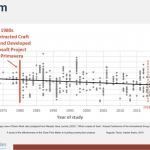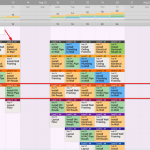If you are using sticky notes on a whiteboard, you are probably dedicated to a better way of planning and communication. If you are consistently collaborating in a room with key stakeholders outside of your organization, you’re well on your way to developing a successful project team. You’re also probably aware of the inefficiencies that accompany your analog system.
Think about it: how often are you handling the data that is collected in your meetings? Once to put it on the sticky note and onto the board. Another time to put it back onto the board because it fell off. Then to get it from the board into your excel sheet where you compile your look-ahead schedule. Not to mention the follow-on step where you blast out a PDF of your look-ahead to the rest of the team.
What if you only had to pull in the data associated with your plan one time, and from there you could simultaneously plan and communicate across the project team? Acceptance and adoption of technology programs by the construction industry is much more common and software like Touchplan makes the lives of those managing this information much easier
Embrace The “Tech” Magic
I used to think the “magic” happens when someone physically puts a sticky note on the board as their promise. Now I know the magic actually lies in building a team that works together with honest and effective communication. Every team is going to miss promises. Unforeseen conditions and human error have always been a part of this industry. How we manage that is where we have hit a crossroad. We can either run a job through emotional manipulation or by having data-driven conversations. Constantly assessing performance with an understanding that we are all aligned with the common goal to maximize profit.
But what about the people who don’t care about being a team player? I admit, some people simply will not come around. However, they are more the exception than the rule, and I am willing to bet their days as a legitimate player in this industry are numbered. Have one on your project? Fine, remove them from your collaborative planning equation, but understand that most want to belong to a successful team.
Where does the argument for analog vs. digital come in? Easy. With Touchplan, you can have data-driven conversations with people about performance and project objectives. The inputs are captured as a part of your normal planning and communication process, and you can instantly make them valuable. If you are serious about improving your existing process, you will have to account for the time it takes to collect the data required. Everyone’s time is valuable, and the more time we allow for forward-thinking and planning vice manual data entry, the better. Be sure to include time savings from handling information in your ROI assessment when considering a software solution. It might pay for itself just by cutting out time spent after meetings in Excel, let alone improved productivity through a better workflow.
Get the Plan to the Field
So, how do we get information from our planning session to the place and time where value is created? Some people have photographic memories and can remember in perfect detail what was discussed during the meeting. For the rest of us, we must have a portable reference. Notebooks are great, but they don’t automatically update nor make our data useful. This is where software like Touchplan comes in. It packages the work plan into a user-friendly interface that leaves no room for ambiguity. We take the meeting with us to the field in our pocket.
My experience with an analog system quickly exposed opportunities for process improvement. I clung to sticky notes on the board for as long as I could but found that going all-digital with planning and communicating look-aheads was much more efficient. Keep the benefit of collaboration in your weekly work plan meetings and daily huddles by providing a means for concise, visual communication, but don’t sweat it if there isn’t a sticky note in the room. You can build a culture of continuous improvement and teamwork by establishing a routine of effective communication and data analysis, which leads to project success.
Stay tuned for part two of Andrew’s post on moving to digital planning. To see other content by Andrew be sure to read Tracking Repetitive Scopes Made Easier.










